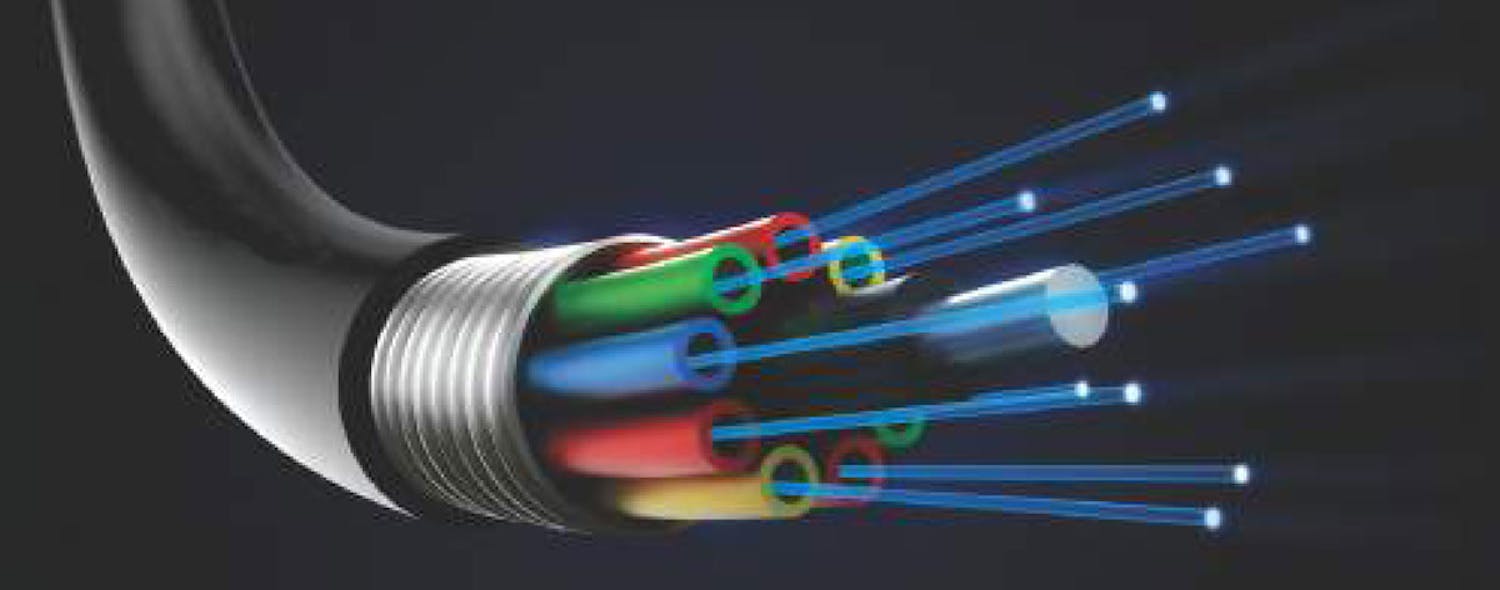What is Optical Fiber?
Optical Fiber is a unique transmission medium. It has some unique advantages over conventional communication media such as copper wire, microwave or co-axial cables. The major advantage is its high transmission capacity i.e. optical fiber can carry information at higher data rates over very long distance. Since fibers are made of a dielectric material, they are immune to radiated and conducted interference. It is nearly impossible to tap an optical fiber; therefore optical fiber transmission is very secure. Optic fiber is small and light weight which is an evident issue whenever weight and bulk are a practical concern. Fiber Optics is the least expensive, most reliable method for high speed and/or long distance communications. The medium used in Fiber optic transmission is glass or plastic. Optical fiber can be seen as dielectric circular medium with a core and cladding. The core has a slightly higher index of refraction and light is guided by total internal reflection at the boundary between core and cladding. Fiber Optics is the communications medium that works by sending optical signals down hair-thin strands of extremely pure glass or plastic fiber. The light is “guided” down the center of the fiber called the “core”.
The core is surrounded by an optical material called the “cladding” that traps the light in the core using an optical technique called “total internal reflection.” The fiber itself is coated by a “buffer” as it is made to protect the fiber from moisture and physical damage. The buffer is what one strips off the fiber for termination or splicing. The carrier of information signal is light. Light is an electromagnetic radiation. It can be viewed either as photons or waves and travels at the speed of 3,00,000 kms/sec. Both viewpoints are valid and valuable. The term ‘light’ is commonly used to refer to visible light that occupies atiny portion of the electromagnetic spectrum from 391 to 770 nm. However, because of the transmission properties of optic fibers, light wave systems use radiation with wavelengths ranging from approximately 800 to 1600 nm. These wavelengths belong to the Infrared Ray (IR) portion of the electromagnetic spectrum, but the term light wave is commonly used when referring to them.
The light wave used as carrier in optical transmission systems is an electromagnetic wave with a wavelength around 1 µm and oscillation frequency of about 300 Hz. The typical fiber optic wavelengths are 850 nm, 1310 nm & 1550 nm; all being located in the near infrared range of the electromagnetic spectrum. These 3 wavelengths result from the attenuation characteristics of glass as well as from the availability of semiconductor type sources and receivers. They are referred to as the three wavelength windows in fiber.

Applications:
LAN: Local Area Network & Fiber To The Home (FTIH) CATV: for video, voice and internet connections
Utilities: Management of power grid Security: closed circuit TV and intrusion sensors Military: everywhere
